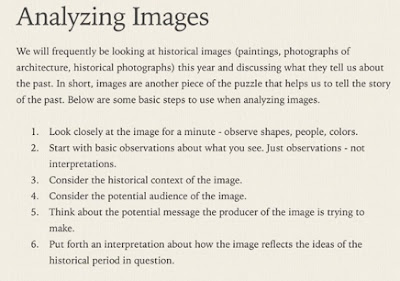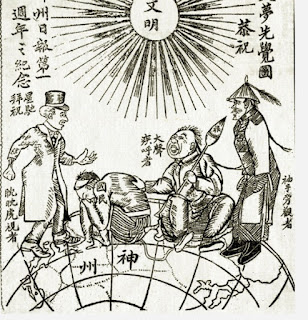Using Images in AP World History
Images offer students a great way to understand history. The AP World History chat recently asked teachers to suggest images they used in their classes. Here are a few that I snagged.

Here is a 1918 image from an Indian Home Rule pamphlet. It shows the British keeping Indians off Wilson's boat of self-determination.
The image below from Puck in 1899 shows Japanese perceptions of the West.
This 1886 image below called "Mongolian Octopus" looks at the causes and effects of immigration between 1750 and 1900.
This 1900 image below from Puck shows Chinese perceptions of Western imperialism.
Bram Hubbell tweeted the handout below for analyzing images which ask students to consider the context, audience, and message of each image.
The nine images below cover all periods from post-classical to the early 20th century.
The image below represents the Danse Macabre, or the Dance of Death, painted in the 16th century during the Black Death.

Here's an image from the Song Dyansty scroll which shows society and urban life in Song China.
The image below from Puck in 1899 shows Japanese perceptions of the West.
The image below come s from a Chinese newspaper in China on western colonialism and the response of the Qing court. According to the essay from which this came, "the action takes place on “sacred” Chinese soil, Shenzhou, and under the brilliant sun of “civilization,” wenming, that shines on the present. The Westerner on the left is entering the sacred place with a “greedy look” on his face, while the Manchu official on the right is just “idly standing by."
Here's a German cartoon called "Thus Colonize the English" showing imperialism in Arica.
Foreigners divide up China in the image below Minhu ribao 1909. The pig in the middle, according to Angela Lee, is labeled China and the slices are areas of China.









Comments
Post a Comment